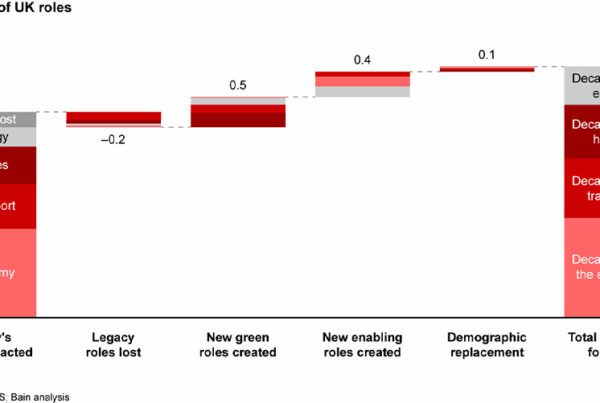The last two years have wreaked havoc on many supply chains. Calum Lewis, Founder of OP2MA, outlines how the changing landscape is forcing many companies to see their supply chain in a new light, including how and where they produce their goods.
A global pandemic, a war between Russia and Ukraine, continuing chaos in China and the blocking of the Suez Canal have all, understandably, had a huge impact on the ability of organisations across multiple sectors to get their hands on the goods and supplies they need to continue operations.
This has led to some companies looking to reduce the length of their supply chains, bringing supplies and manufacturing nearer to them. This is likely to be something we see more companies considering.

Shortening supply chains can bring production and stock are nearer to hand reducing the potential for delays in the event of a major incident. So, are we seeing the end of ‘globalisation’ as a result?
What drove globalisation in the first place?
Globalisation was initially driven by cost saving, with businesses seeking out lower labour and operating costs in different regions. Sourcing similar quality products but at a much cheaper rate – it undoubtedly made business sense for many.
However, an extended supply chain naturally means that it takes longer for goods to reach the market and relies on inventory to ensure that goods are available. In an environment with historically low interest rates, the cost of working capital most likely would not offset the benefit from offshoring. Extended supply chains then developed, relying on benign conditions for the smooth operation of containerised freight.
Most notably China amongst others, have seen considerable infrastructure develop around clusters of manufacturing activity, with networks of suppliers and large pools of skilled labour driving growth and innovation. The expansion of sea ports and other physical logistic flows has made sourcing on a global basis a realistic proposition for many organisations.
So, the case for globalisation is a strong one and as such has been taken advantage of by multiple companies across multiple verticals. However, after nearly three decades of globalisation, recent events have placed real pressure on extended supply chains and are fuelling a rethink of past assumptions.
For all the benefits globalisation has delivered, many companies are looking to find ways of building resilience into their supply chain and bring activities closer to home. Near-shoring can, on the face of it, mitigate the risk of disruptive events impacting the supply chain quite literally by bringing manufacturing and supply nearer to market demand.
Near-shoring is not the right answer for all
Could a move to near-shoring help solve the issues companies are facing? The answer is possibly not. Near-shoring sounds easy but the offshoring that removed capacity and capability in the developed economies of Western Europe and North America will need to be reversed. This will take time and significant investment. Rebuilding requires a longer-term view; manufacturing assets tend to be expensive and coherent training programmes need to emerge with government support.
The cost differential between offshore and near-shore will take time to play out; the trade-off between lower cost/longer lead times (with typically higher inventory and greater disruption risk) and higher cost/shorter lead times (with less potential risk of disruption) will need to be made by businesses on a case-by-case basis. Different materials and product components will have different dynamics and situations.
This trade off analysis should be based on having a full understanding of all supply chain cost factors; this not a strength of the many businesses that have tended to focus primarily on bought-in price and gross margin and ignored logistics and supply chain management costs.
With many businesses having shifted manufacturing overseas, the skills associated with the manufacturing process will have been lost from local workforces. Re-training and up-skilling will be critical much as increased automation will play a significant role. All of this, of course, comes at a cost.
There are some aspects of near-shoring that are out of the hands of companies. There needs to be co-ordinated government action in order to foster the right investment environment and training infrastructure. Some sectors immediately jumpy out as ripe for this type of government action.
The semi-conductors industry is already seeing a concerted effort to expand local manufacturing in order to counter the chip shortage and reliance on Taiwan, in particular, for crucial components.
An additional factor for UK based companies to consider is the impact of Brexit. Enhancing regional manufacturing will for many have a pan-European focus. So, when assessing a new footprint a factory that can serve the large European market may make a valid investment (although this is subject to the dynamics of a given sector). However, the UK’s exit from the EU free-trade zone complicates this for UK companies and places further restrictions and costs on their decision.
Other factors will push companies closer to home
A good business case may develop to move some or all aspects of a company’s supply chain near-shore. We will undoubtedly see some reduction in globalisation as companies move to secure their extended supply chains nearer to home in the hope of reducing risk. However, we have also seen that this is not a simple move and one that is likely to involve a lot of up-front cost with the potential for limited, shorter-term ROI.
As well as the significant global events pushing companies towards near-shoring, there has been some movement in that direction over the past few years. An increase in environmental, social and corporate governance (ESG) thinking has influenced companies looking to reduce impact on the environment and achieve sustainability goals.
Also, labour cost differences between near-shore and offshore have over the past few years begun to reduce. The aspirations and demands of populations have naturally, and rightly, led to an increase in wages. There is still a significant difference, but perhaps not one that will immediately rule-out any consideration for moving to near-shore manufacturing or final assembly.
There is no right or wrong answer to a company’s decision to reduce the length of their supply chains. Like any business decision it is a complicated one. There should be no knee-jerk reactive move to the huge global events that have had such an impact on supply chains over the past few months.
However, what has been a slow move towards near-shoring will likely accelerate. For companies with large, complex, extended supply chains the move to near-shore will need to be carefully planned and implementation phased to mitigate disruption. The up-front cost and lack of near-term ROI will, no doubt, be factor in determining timing and could well rule-out a complete move for many.
We are much more likely to see piecemeal movements towards shorter supply chains as companies look to reduce some risk but without having to commit huge amounts of budget. Having a full grasp on current supply chain service performance, costs, and capital requirements should form the basis for re-design. Scenarios for new operating models can then be tested and options evaluated.
As recent events have demonstrated, placing a value on assured supply is as essential as knowing costs.




